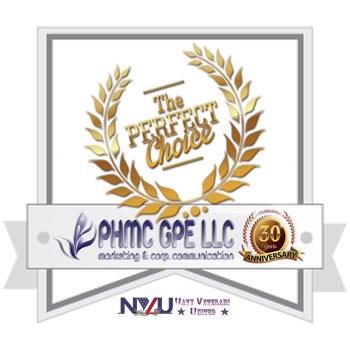Published on 01/29/2021 – Last Updated on 01/29/2021 by OTC
Posted by amandamilligan
If you need to get backlinks and generate brand awareness for clients, a great way to start is by creating original research and then pitching that research to writers. But the promotion of your work is probably the trickiest part, and a lot of it comes down to the pitch email you send to a writer.
To make this task a bit less daunting, in this episode of Whiteboard Friday, Amanda Milligan of Fractl walks you through a real pitch email that resulted in coverage of one of their stories.
Click on the whiteboard image above to open a high resolution version in a new tab!
Video Transcription
Hi, everyone. Welcome to another edition of Whiteboard Friday. My name is Amanda Milligan. I’m the Marketing Director at Fractl. Today I’m going to talk to you about the anatomy of the perfect pitch email.
This has to do with the digital PR space. The way that we get backlinks and brand awareness for our clients is by creating original research, new studies and surveys, and then pitching those things to writers. Now the pitching and the promotion is some of the trickiest part, and a lot of it comes down to this — the email you send to a writer.
So what I’ve done here is literally write out a real pitch email that was sent to a writer that resulted in a publication and coverage of the story. I’ll shout out to Skylar who wrote this one. What I’m going to do is walk through each piece of it, each element that we think is extremely important and that we include in all of our emails.
Human connection
So to start, I actually use this email because it didn’t delve too much into the personalization. I wanted to show an example of what happens if you can’t personalize as well. But personalization or any kind of human connection is extremely important, and it should be the lead into the body of your email.
So in this case, it’s a little more general. It says, “We all remember the horror flicks that left us sleeping with the lights on.” So that’s a more general human experience. I know I slept with the lights on when I saw “The Ring” for the first time. That’s just some way to connect with the person who’s reading it, to have them think of a memory.
However, if you actually have a chance to personalize an email, for example, if the writer has written something that resonates with you recently or you follow them on Twitter or LinkedIn and you like something that they shared, you can connect with them — you went to the same school, you have the same love of animals. We actually have a lot of people who pitched this year like pitching pictures of their animals and talking about how much they love dogs or cats.
Anything that is genuine can do really well. But remember that there’s a human being on the other side of the email that you’re sending, and just humanize this a little bit. So that should be about a sentence or two. As you can see here, it ends about here. So you don’t want to go into a whole life story, but touch on that a little bit.
Top-level project description
The next segment is a top-level project description. So the next sentence here says, “Could you imagine if one of those characters occupied the room next to yours?” So now we’re bridging the kind of anecdote to the actual project. “To explore this further, my team asked over 1,000 TV and movie fans about their most and least desirable fictional roommates.”
So right there you know exactly what the project is about. It’s about a survey we did asking people which fictional characters in all kinds of media they would like to live with. So it’s very fun. It’s a light piece. It’s a fun piece. However, the structure is still the same when creating these pitch emails. No matter if it’s hard news or something a little more lighthearted, this is a really effective way to go.
Main takeaways
So that covers human connection and top-level project description. This next piece is arguably the most important. This, as you can see over here, are the main takeaways, the biggest, most interesting, new insights from this study that you did. You don’t want the writer to be sifting through your content trying to figure out why they care or why any of their readers are going to care.
It’s your job to pull the two or three most interesting takeaways, literally create a bulleted list for them so that they can see it very quickly. So in this case, Skylar literally said, “Here’s what we found: The Beetlejuice home ranks as one of the most identifiable movie houses. However, Beetlejuice was the least desirable fictional roommate.”
Understandably. The reason why I can assume she called this out is because, in this particular pitch, she was pitching a home publication, so she’s talking about houses. The reason I highlight that is you shouldn’t have even the same body of a pitch that you send to everyone. It depends on who their readers are and the topics that they cover, the subtopics they cover.
Even if you know they’re relevant and you’re pitching them in the first place, make sure to tailor every aspect of the email to them specifically. You might have a list of 10 to 15 interesting takeaways, and you piece together which ones make the most sense per writer. So then some other facts. “Movie fans agree Norman Bates would have been equally undesirable as the Hulk would be as a roommate.”
Which is just fun. “Despite appearing in your dreams while you’re fast asleep, Freddy Krueger ranks as less desirable than Hannibal Lecter.” So the fun thing about this project and something I didn’t mention at the top is that we were pitching it around Halloween. So it makes a little more sense. You have that timeliness factor also.
This is fun, but they’re basically writing these bullet points thinking like, “What can the writer’s headline be? What are they going to say is the most interesting part of this project, and why do they think it’s going to be fun or funny or entertaining or useful or informative?” So that covers this section. It’s extremely important. Honestly, as you’re creating content, you should be thinking of these things, hypothesizing what these could look like.
Link to the content
If you can’t even imagine what little bullet points you’re going to be able to create after you do something, it might not be interesting enough, or you might not be on the right track. So then this is important. It’s small, but it’s important. “Here’s a link to the full study.” Linked. Some people do the tactic of kind of asking, “Oh, do you want to see the rest? We can send it to you.”
We don’t recommend doing that because you don’t want to add an extra step. You don’t want writers to have to work for anything. You want to give them everything they need to make a decision. So you’re making it easy for them by calling out the bullet points that are the most relevant. Then you’re saying, “But listen, look at the whole study if you want. If this is intriguing to you, here it is. You can view the whole thing and make a decision as to whether it’s a good fit for your audience.” So be sure to do that.
Direct ask
Then Skylar did a good job by saying, “It’s the very first day of October,” which it was at the time, “and your readers are gearing up for Halloween.” So she’s tying it back to the relevancy of the project to their readers, which is what you always have to think about. The writer only cares about whether something is going to resonate with their readership. That means that they’re doing a good job. So she kind of ties that up. “Any interest in sharing this exclusive study with [the publication]?” So I highlighted here a direct ask. So come out and say like, “So do you want to cover this?” In this case, we were pitching it as an exclusive, meaning nobody else hadn’t covered it yet, which makes it a little more appealing.
You’re saying, “You’re going to be the first ones to talk about this study.” You can say it’s exclusive, and you can highlight that in the email as well. But even if you’re not doing that, if you’re pitching it to a bunch of people or somebody has already covered it and you’re still pitching it, just make sure you directly ask, “Are you interested in covering this?” Don’t assume that they even know how to respond. So those are the four main components of a pitch email.
Conclusion
Now there’s a lot that goes into making this work. This is just one piece of a greater puzzle. Your content has to be fantastic, because, as I say, no fantastic pitch can salvage a terrible project. You just can’t pitch your way out of it. But also you need to be targeting the right people.
So sometimes we have fantastic pitch emails go out, or anybody has fantastic pitch emails go out, but the person, for whatever reason, can’t cover the content. That happens. It certainly happens. Sometimes people have full editorial calendars, or they just wrote about something recently similar. But you want to avoid the situation where they say, “Cool pitch, but this isn’t my niche.”
This happens all the time in the industry. We surveyed 500 publishers last year, in 2019, depending on when you’re listening to this, and they said that their number one pet peeve is being pitched content that does not match their niche. So they’re being pitched things that they don’t typically write about. So this is a fantastic way to increase the chances of your pitch being successful, but that doesn’t mean that it’s foolproof if you haven’t done all these other steps.
If you’re interested in learning about those things, check out my other content on Moz. I’ve talked about what makes great content. I’ve talked about some things to look at when it comes to who to pitch. All these things fit together. But I did want to break down for you exactly what that pitch can look like. So best of luck out there. I know it’s tough.
Talk to you soon.
Video transcription by Speechpad.com
Sign up for The Moz Top 10, a semimonthly mailer updating you on the top ten hottest pieces of SEO news, tips, and rad links uncovered by the Moz team. Think of it as your exclusive digest of stuff you don’t have time to hunt down but want to read!
![]()












Comments